By Pete Vack and Alex Vazeos
Geburth Fiat Photos courtesy of Alex Vazeos
From the VeloceToday Archives, March 2012
What about sending an Italian chassis out of Italy to have coachwork built? The normal direction would be to send your chassis to Italy where it would be given a fine set of new clothes by one of the famous carrozzerias that dotted the landscape in the 50s and 60s. It would be unique, well done, inexpensive and probably beautiful. Being contrary then would involve having a chassis made in Italy bodied in some country not particularly known for automobiles and automobile design, like Austria.
Of course Italian chassis have been sent outward of their native land to be bodied and re-bodied for years, for example many pre-war Alfa Romeos were sent to the UK and bodied by James Young, Ranalah, or even more obscure firms such as Thornton. There was even a Ferrari 166 bodied by Abbot which did not last too long before being re-bodied again; another example was the couple of early Ferraris bodied by the Swiss firm of Ghia Aigle.
But still, such attempts go against the tide and in many cases were not very successful. Recently another such effort was uncovered in Austria, and therein lies our story, and as our resident car collector, Alex Vazeos, was quick to point out, “There couldn’t have been so many Austrian bodied Fiat 1100’s around so it might be worth a story”. We agreed.
The Fiat 508C
The Fiat in question was a 1938 model, a simple 1089cc 508C four-door sedan, officially still called a “Balilla”, but the name was fading by then. The 508C was one of the most popular and successful Fiats to date, and over 250,000 were built between 1937 and 1939.
This 508C found its way to Austria, but the first ten years of its life are unknown, probably due to the war. It re-surfaced in November of 1948, when a Carl Rainer Harbach duly registered the car in the town of Pörtschach, famous for Johannes Brahms, who worked on his second symphony while staying in the tiny town, about 125Km from Venice. The next year it made its way to a new owner and location in Wein, a suburb of Vienna. After changing hands a few more times, on April 23 1955, it became the property of Dr. Oskar Göhring, the owner of a Heating-A/C firm by the name of Geburth-Kühlanlagen. Little did it know that it would be transformed, given a new life, and unlike most of the other 250,000 examples of 508Cs, be saved for posterity.
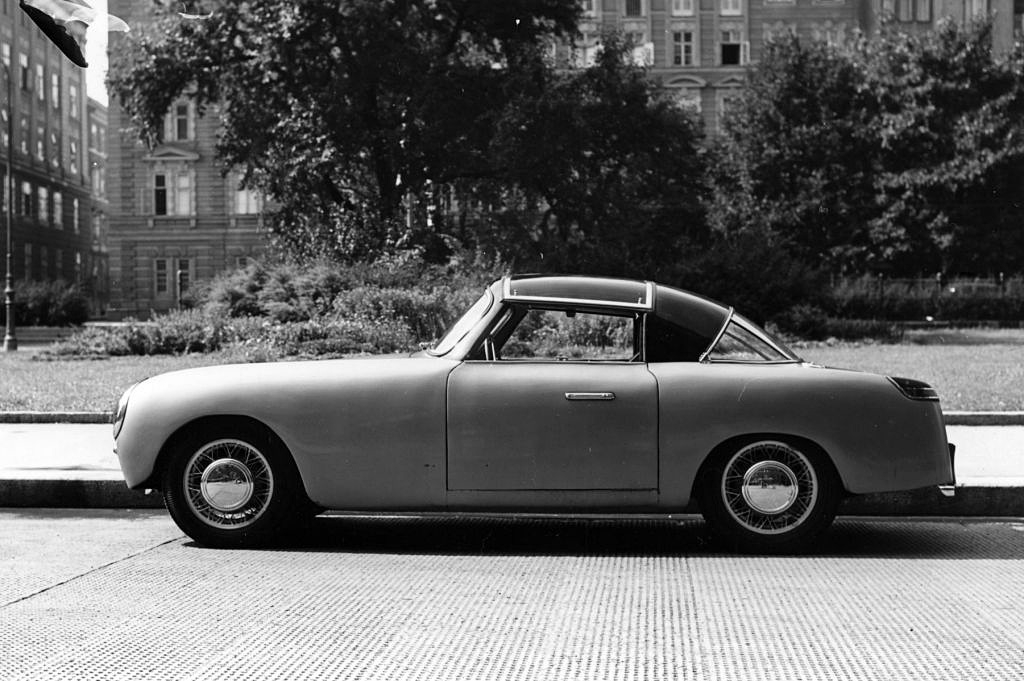
This is likely one of the first photos of the Geburth Fiat… note the doorhandles, plexiglass top and clean lines of the one off Fiat.
The 508C was about to come into contact with a young man interested in participating in motoring competitions. Rudolph “Rudi” Wein, the nephew of Dr. Göhring, had already been thrashing the Doctor’s Aero estate wagon about on competitive events such as the Alpenfahrt Rally, an event descended from the great pre-war Alpine Trials. Here, drivers could test themselves and their cars (and motorcycles) against the majesty of the Austrian Alps.
Uncle Göhring’s newly acquired but aging Fiat inspired Rudi to think further along the lines of a car for rally use and he began sketching out his ideas. Then, Rudi persuaded Göhring to allow him to build a sports car on the chassis of the 508C.
Wein’s vision
As Rudi´s wife Renate Wein later reported, her husband “had a very clear vision what the new car had to be: elegant, sleek, sporting, following the Italian style he had seen from Cisitalia and other Italian car designers.” If you can’t send the car to Italy, take the designs to Austria.

The rear view of the car was elegant even with the twin latches. Tail lights were Opel, and the overall effect was very Facel Vega. Note lack of rear bumpers when this photo was taken.
Wein was probably just as inspired by American, German and French designs as Italian. One of the more interesting features of what would be called the “Geburth” was the two removable roof panels originally made of Plexiglas. The year was 1955, and in America another home built car was getting a lot of attention…the Flajole Forerunner, which featured a Plexiglas sliding roof operating on nylon rollers. The Geburth front end also had hints of the 1952 300SL racing coupes. At the rear, the view was similar to a Facel Vega.
Like many professional carrozzerias, Wein made use of available hardware; taillights from an Opel Kapitan, the Italianate door handles were from a Mercedes Gullwing, the seats from a 190SL and the instruments were from Italy.

Perhaps a bit overchromed, the front view of the Fiat Geburth was very aggressive with elements of the Pinin Farina Maserati A6G 2000, and the 1952 version of the Mercedes Gullwing. All would have influenced Wein’s vision.
Remarkably, once Wein had sketched out the basic design, the steel body was then handcrafted by workmen in the Geburth factory. Our guess is that the employees really enjoyed putting their considerable metal crafting skills to good use. There would be a few problems, the major ones being proper weather sealing of the removable Plexiglas tops. But it was a good, sturdy car, albeit a bit on the heavy side due to the thick steel used in the construction of the body.

Although Wein thought he might race or rally his creation, the car was used primarily on the streets of Vienna. But one of the photos that came with the car indicated Wein might have rallied or raced the Fiat at one time.
The engine was tuned and equipped with a side draft Weber and reportedly produced about 55 hp in that form. To further aid performance, Wein found a reduction gearbox which was activated by a lever under the dash. The gearbox doubled the four speed’s ratios, providing a handy eight speed box. The rest of the mechanicals were standard Fiat.
Then came the icing. According to the car’s history sheet, Elisabeth Mohsler, Prof. Göhring’s life companion, later confirmed the unusual color of the car: “Rudi”, she wrote, “was a man of taste and he wanted for the car to really look extraordinary, therefore the turquoise color so as to give the car an extravagant look.”
A short but happy life
Amazingly, the car was designed and constructed before the year was out. As period photographs show, Rudi Wein not only enjoyed his creation, but at least at one point had racing numbers taped to the bodywork. However, it served as more or less a boulevard street racer for Wein. The Geburth Company itself was in financial difficulties and there was little money to further develop what was now a 20-year-old Fiat.
By the early 1960s, Geburth filed for bankruptcy and the car was acquired from the estate by a local scrap yard owner and antique dealer by the name of Stefan Paradeiser. Into his warehouse went the Fiat Geburth and there it stayed, long forgotten, until…
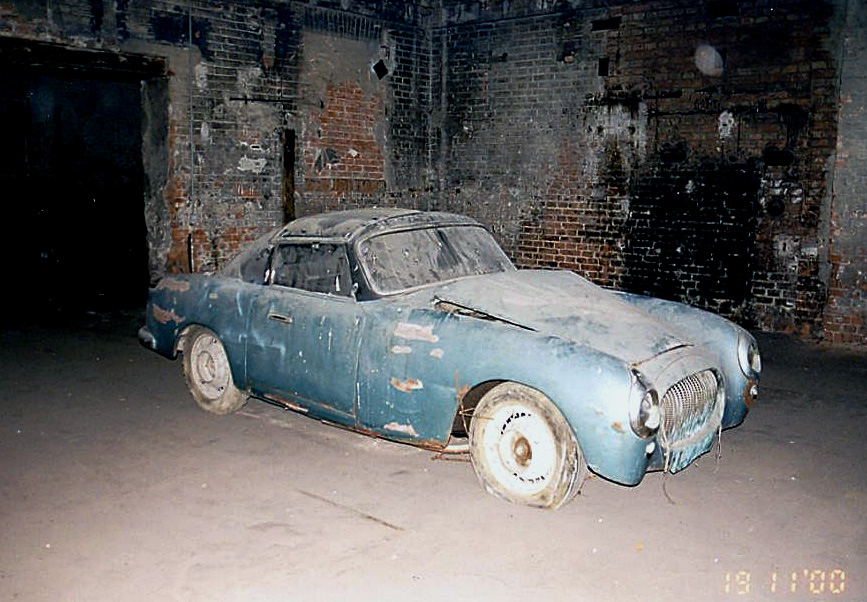
In the early 1960s, the Fiat was sold as part of a bankruptcy and then was neglected and forgotten. This ‘as found’ photo was taken around 2000.
Resurrection
In one of those amazing, happy circumstances of fate, in the 1990’s a real estate developer, Winfried Kallinger, bought out some of the properties once owned by the family of Dr. Göhring, including the scrap yard in which the Fiat Geburth was lying neglected since 1960.
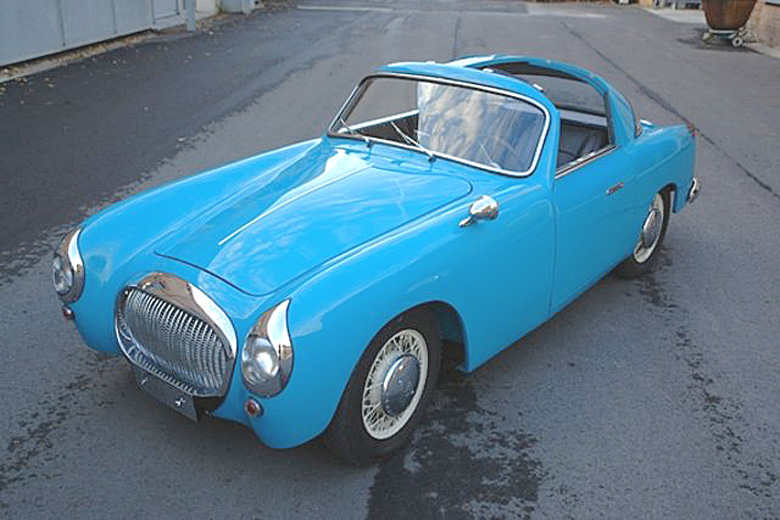
Fiat Geburth after restoration, with the tops removed. Aluminum panels replaced the original plexiglass but it is one of the first true ‘Targa Tops’ so popular in the 1970s.
“The Fiat is really unique and my relation to it was also very personal,” wrote Kallinger. “I had a business connection with the family of the late Dr. Göhring, and while doing this purchase I found the car which was the last remains of the Geburth company, sitting neglected in a scrap yard. With that emotional background I had it restored with no expense spared.”
That restoration was completed about three years ago. According to Kallinger, “The condition of the car is excellent and it was used only sparingly after its restoration. The mileage of 8,365 Km on the clock is likely to be correct. There are photos of the car as found. It was complete then but in bad condition and the restoration was not an easy task because of its one-off body.” In 2007, the restored Fiat Geburth was shown to Renate Wein, wife of the late Rudi Wein, its designer.
After some use, Kallinger put the Fiat Geburth up for sale. You do remember we mentioned that Alex Vazeos is a car collector of the most discriminate tastes? He even has the author’s old Abarth, so his taste therefore must be impeccable. And guess who now has the one of a kind Fiat Geburth with the Targa top and eight-speed tranny….
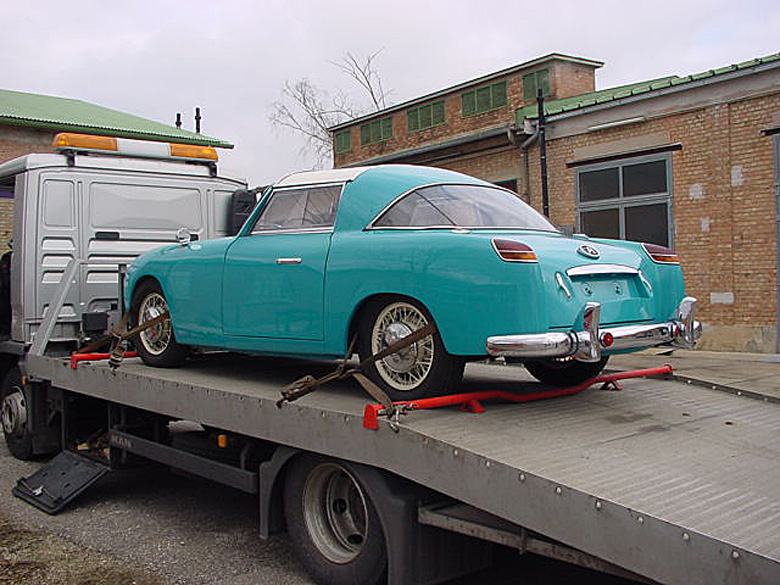
The changes in the trunk were made to accommodate a different license plate and ad a badge. Car is being loaded for its journey to a new home in Greece.
A new home
The rare Fiat Geburth was shipped to Greece and its new owner, and Mr. Vazeos was kind enough to send us a few photos of the car after arrival. The new photos below do more justice to this one off Fiat.

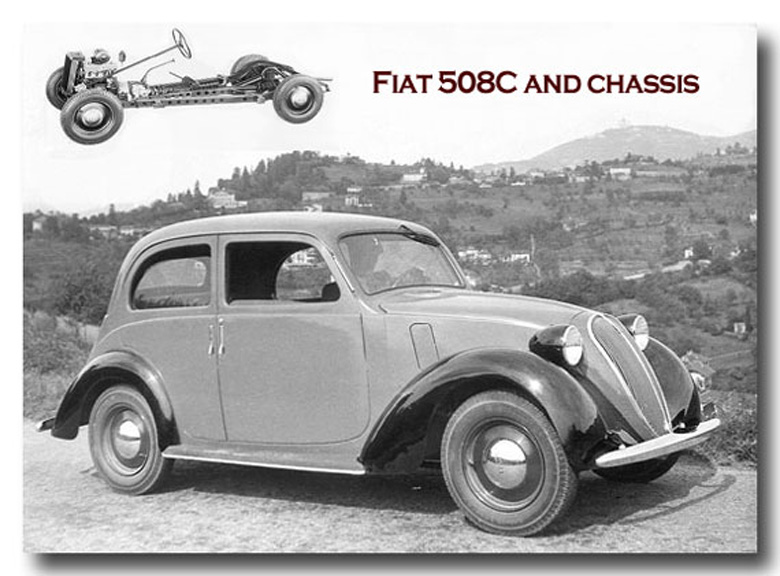

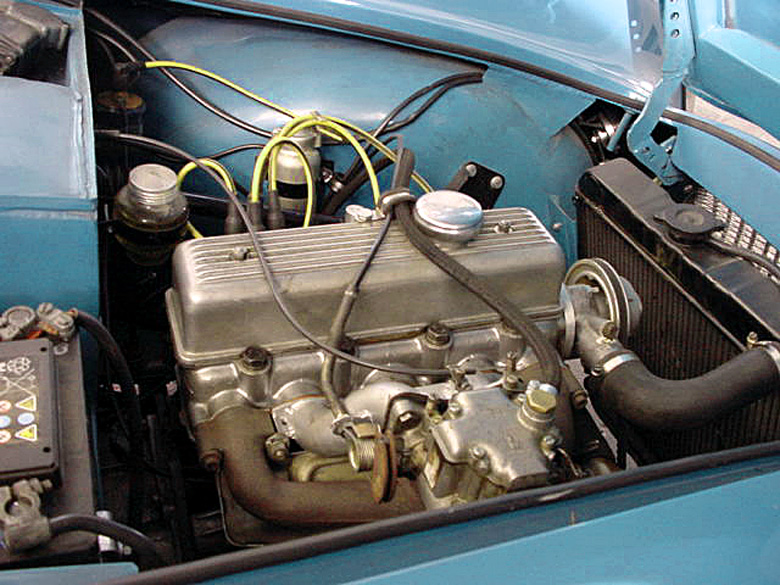


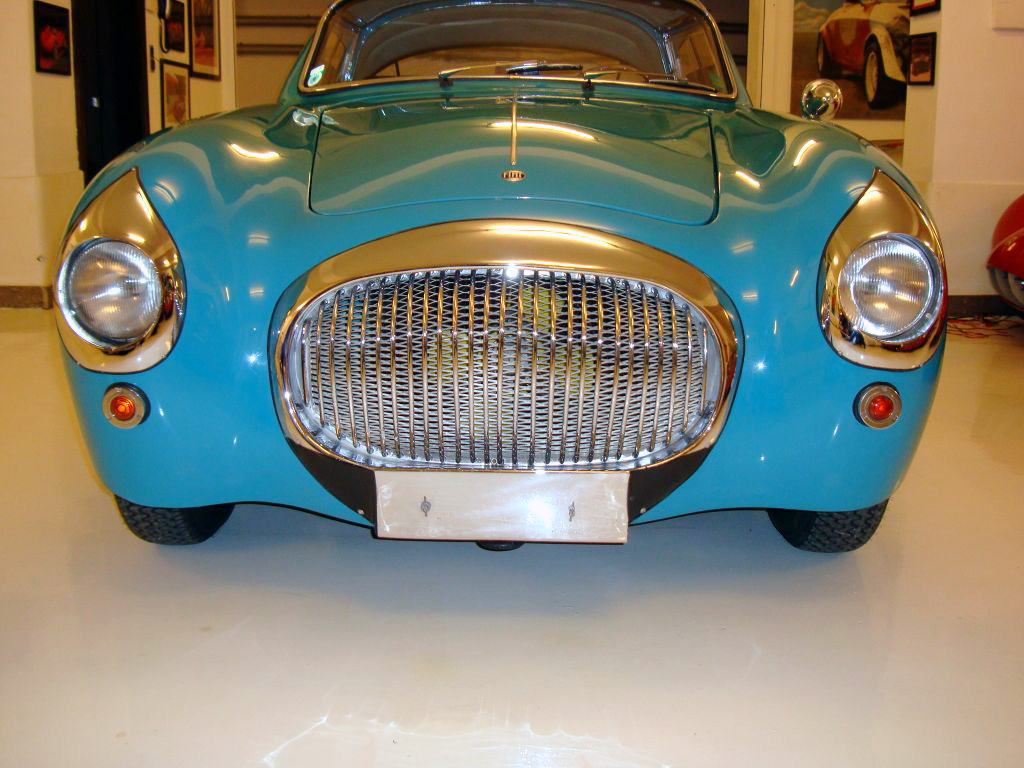
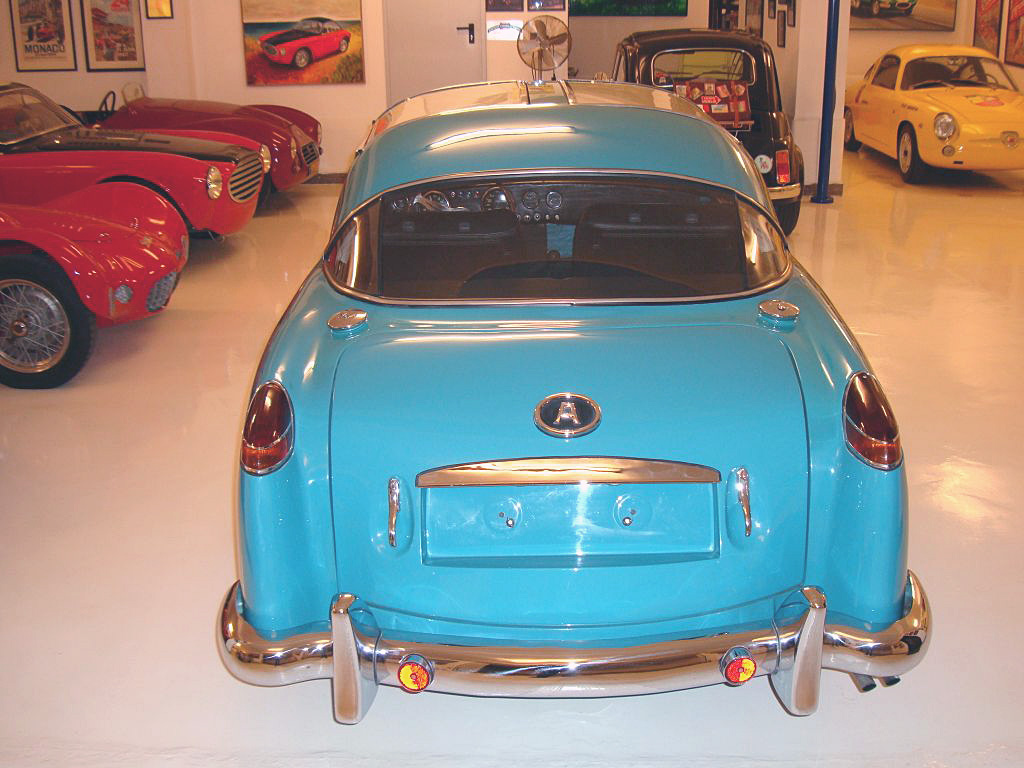
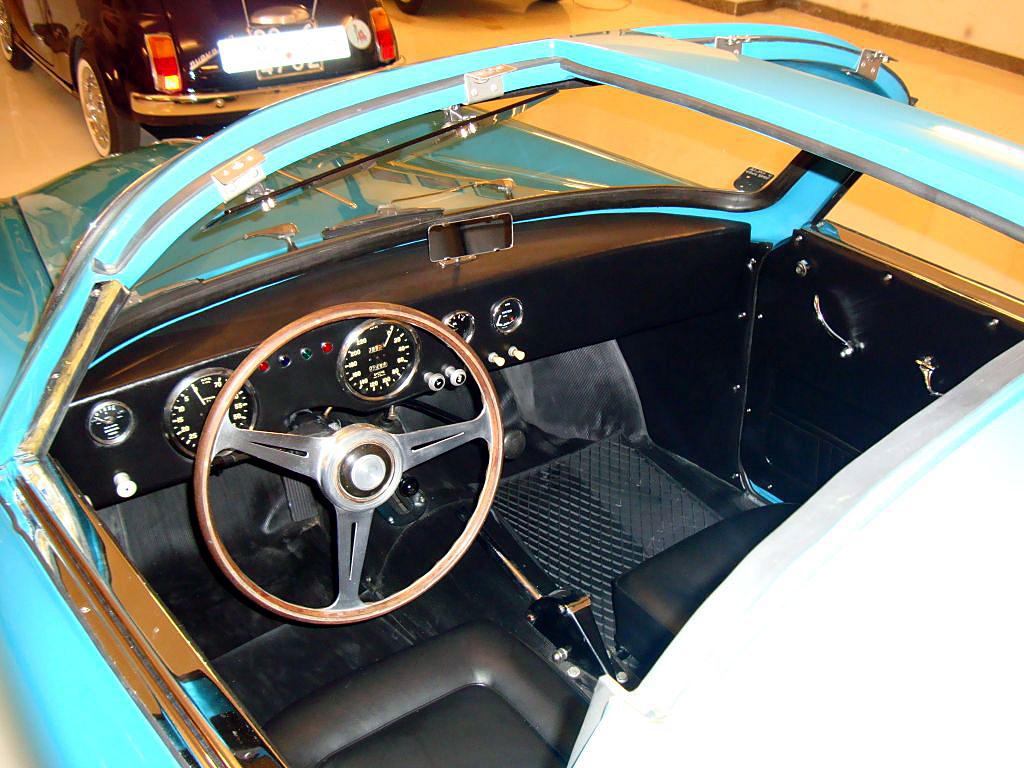
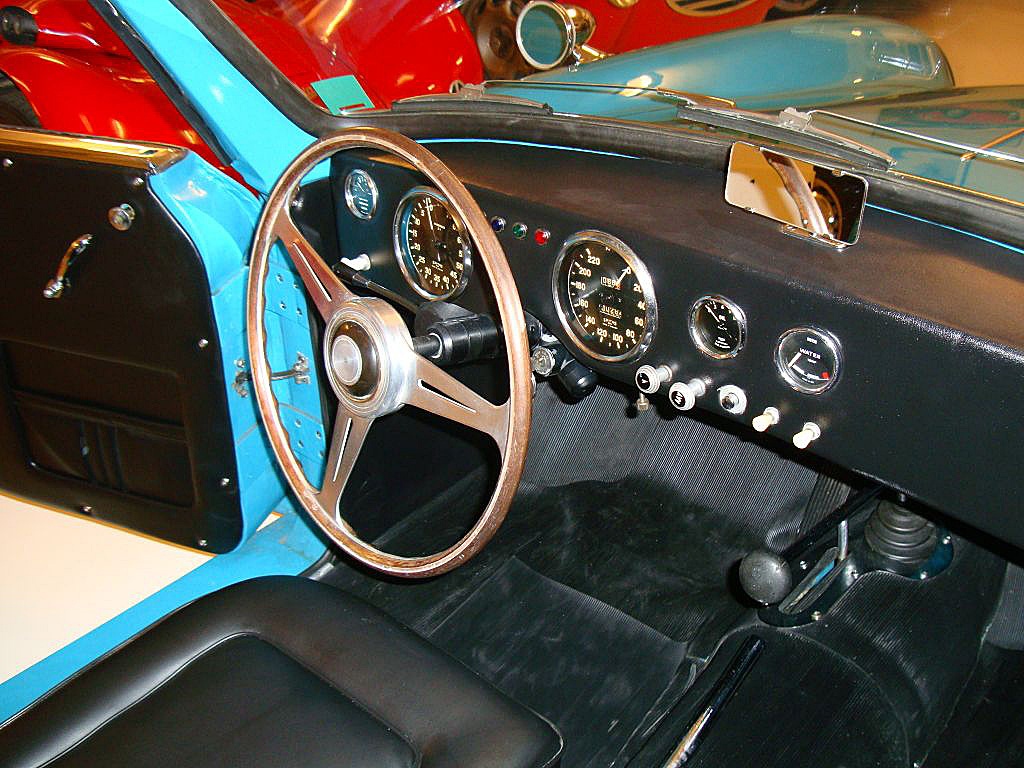
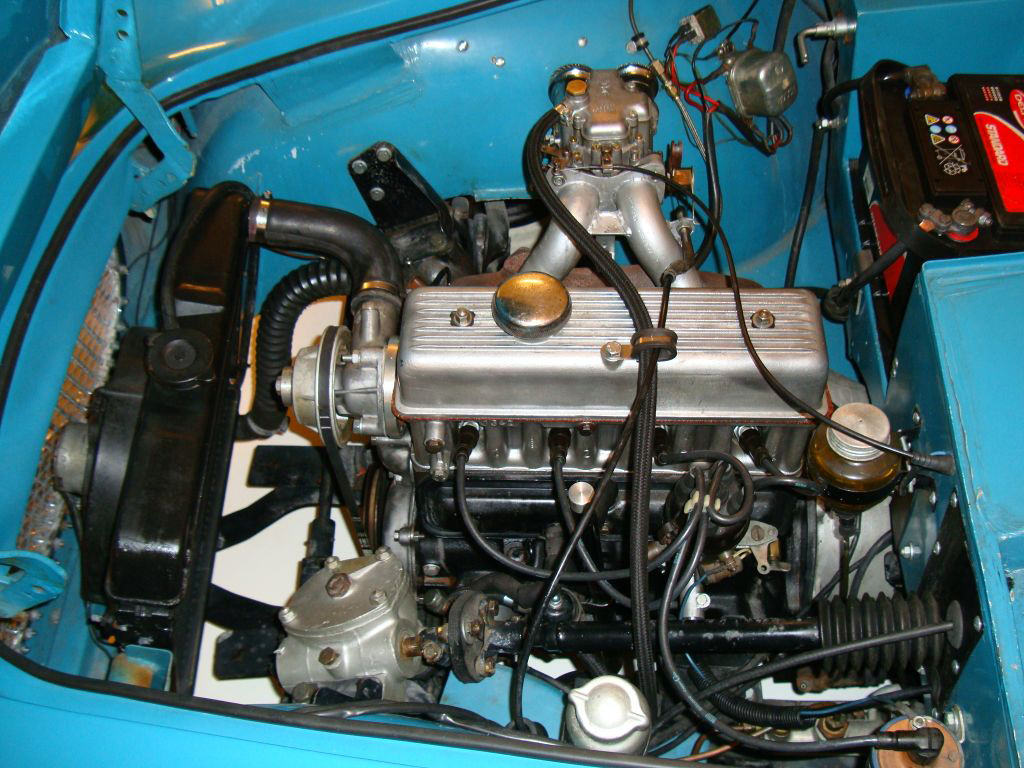
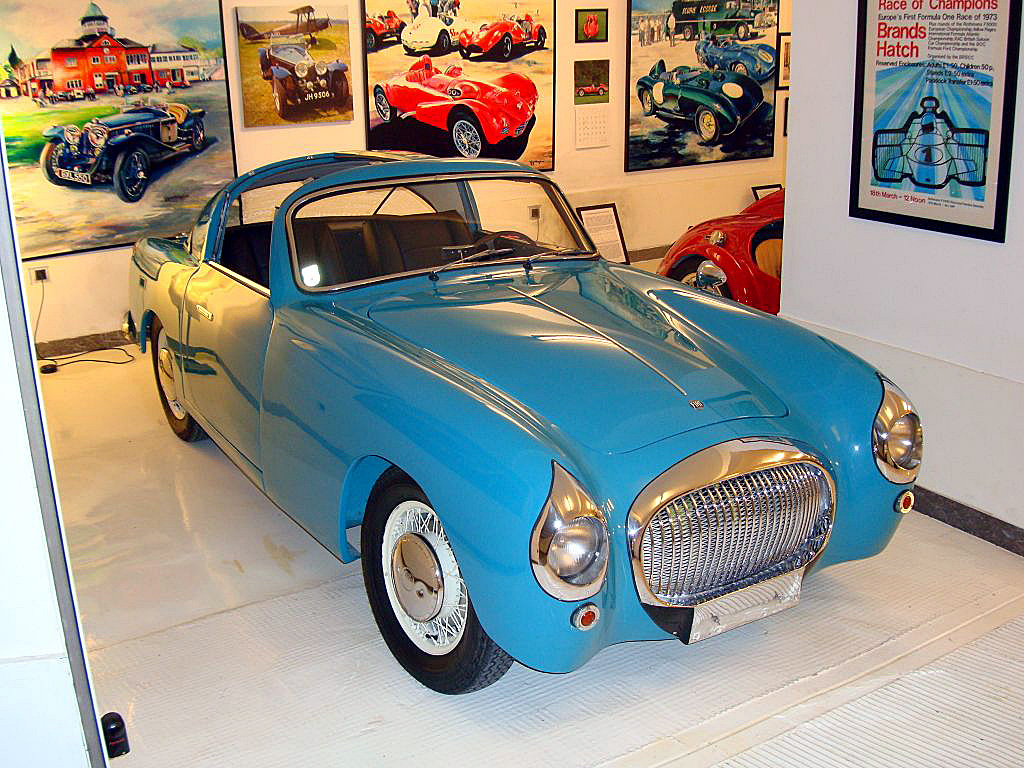
great story. what about the other cars in the garage?
I think we’ll have more about Alex’s garage coming up in VeloceToday..Ed…
Pete,
Great story and since I’ve lived in Vienna for the last 27 years the names mentioned all ring a bell.
Question: does Alex Vazeos have a museum in Greece that is open to the public ? If yes, would love to visit.
Peter Heimann
Vienna
Ol’ Pedantic Davey strikes again: Paragraph 5, Line 5 should certainly read ‘125 Km from Vienna’, not ‘Venice’
Line 6: Wien is the real Austrian name for all of Vienna, as in wieners and wiener schnitzel. I don’t know if there is a suburb called Wein, as in Rudi Wein
Great to see (again) this fine story of the rare GEBURTH!
Being a close friend of Alex since many years, I have also many photos of this car taken inside Alex’s garage.
@Peter Heimann: No Alex does not have a public museum. IN FACT HIS GARAGE IS VERY PRIVATE. But being such a darling and true car guy, he often opens his doors to other visiting Athens car aficionados.
Nice to see it has the correct engine now. When Bill Noon owned it it had a later 103 engine. I have some pictures on Miu FiatSimcaclub west Facebook page.
James P.
Pete,
You brought back some nice memories, than you so much for that!
@James Peocock
I sold the car to Bill Noon, always had a later 103 engine, it was originally restored with this engine.
@Peter Heimann
No museum dear, just a groovy garage! Very private but always open to good friends and VT members!
Alex Vazeos
Maybe deserved to be in the Vienna Technical Museum together with a Fiat 522. Also of course the great Formula 1 Mercedes from the 1950’s.
One of his cars is a Moretti 750 cc Gran Sport coupe! At least I assume it’s a coupe as the roadster versions are very scarce.
I visited my (once) coupe in Connecticut last week.
Great story!